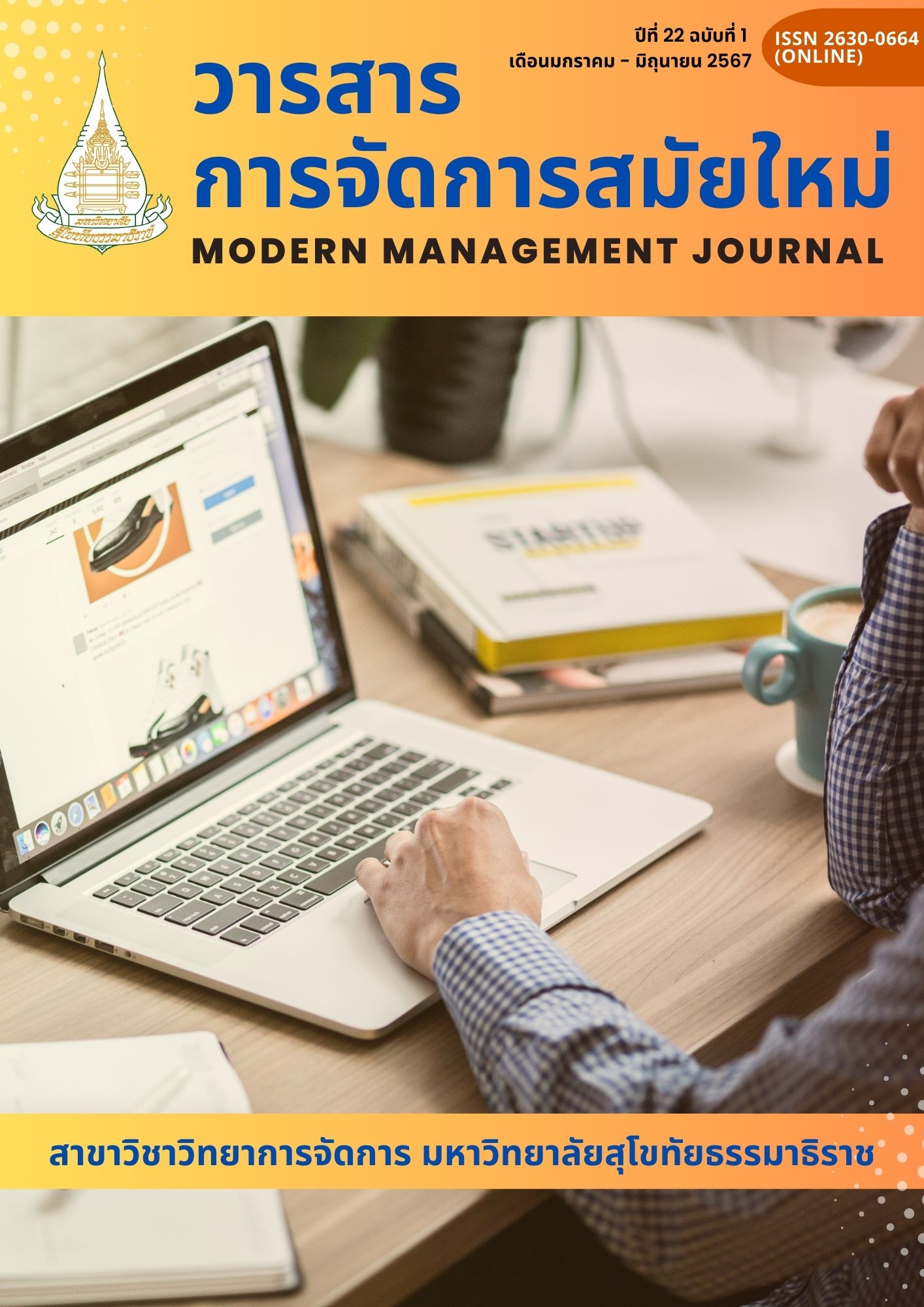Development of Participatory Business Model Canvas to Increase Business Capability of Ban Siao Processed Fruit Community Enterprise
Keywords:
Business Model Canvas, Business plan, community business, tamarindAbstract
The objectives of this study were to study and develop Business Model Canvas (BMC) to increase the business capability of Ban Siao Fruit Processing Group Community Enterprise in a participatory way. This research is a participatory action research. The sample group was 15 people from the management team of the community enterprise, using a purposive sampling technique. Data were collected through observation, in-depth interviews, and participatory forums. Research methods include studying the area context, analysis of group potential, creating a collaborative learning process, creating a business plan and Business Model Canvas using the group's participation, and comparative operating results. The data were analyzed and synthesized by content analysis and were then presented in a descriptive form.
The results showed that Ban Siao Fruit Processing Group Community Enterprise was a community business that had business activities of processing and selling products from sweet tamarind in the area. Its business operations model was not clearly defined. Therefore, we searched and determined the characteristics of its target customers who purchased products regularly. Then, a business model canvas has been created in 9 parts; Customer segments, Value proposition, Channels, Customer relationships, Revenue streams, Key resources, Key activities, Key partner and Cost structure. After implementing the Business Model Canvas in business operations, it was found that the groups had increased business capability by income increased 3.49 times, the production potential increased 1.66 times, and the group had better financial liquidity. Using the Business Model Canvas has helped the group develop and learn how to operate a business very well.
References
Bowonnanthakul, T. (2014). Strengthening the Potential of Human Resource Development. Pathumthani University Academic Journal, 6(2), 186–193. [In Thai]
Buntam, D., Pantang, P., Petmee, P., Khowjoy, K., Wilaikaew, A. & Thamee, T. (2023). The Conceptual Guidelines for Upgrading Tamarind Business Value Chain to Strengthen Local Economy in Uttaradit and Connected Area. In Rajamangala Manufacturing & Management of Technology Conference; RMTC 2023. (pp. 986 - 994). Bangkok: Faculty of Engineering Rajamangala University of Technology Krungthep.
Chantarat, S., Rattanawararak, L. & Chawanoth, C. (2022). Debt Trap and Economic and Financial Development for Grassroots Households. Retrieved from https://www.pier.or.th/abridged/2022/15/ [In Thai]
Inawong, B. (2022). Work plan for Local Enterprise in 2022. Bangkok: Administration Center to Enhance and Enhance the Potential of Local Businesses. [In Thai]
Inluang. F. (2023). Creating Sustainability in Small and Medium Business Management by Creating Shared Value (CSV) and Business Model Canvas (BMC). Journal of Arts Management, 7(3), 1208–1224. [In Thai]
Kattiyawara, K. (2018). A Knowledge Transfer of Business Planning for Development of Handicraft Community Enterprise, Pong Yang Khok Community, Hang Chat District, Lampang Province. Journal of Community Development and Life Quality, 3(3), 261–269. [In Thai]
Ketkaew, K. & Srimai, S. (2019). Business Model and its Implementation. Modern Management Journal, 17(1), 1–12. [In Thai]
Manager Online. (2023). OSMEP summarizes the SME situation in 2023. It is expected that SME GDP will expand by 4 percent, valued at 6.44 trillion baht. Retrieved from https://mgronline.com/smes/detail/9660000113361. [In Thai]
Office of Small and Medium Enterprises Promotion. (2023). MSME situation report for 2023. Bangkok: Vision Prepress. [In Thai]
Osterwalder, A., & Pigneur, Y. (2010). Business Model Generation. New Jersey: John Wiley & Sons.
Parinyasutinun, U. (2016). Community Management: Concepts and Theories needing to be Reviewed. Modern Management Journal, 13(2), 11–22. [In Thai]
Peredo, A. M., & Chrisman, J. J. (2017). Conceptual foundations: Community-based enterprise and community development. In M. van Ham, D. Reuschke, R. Kleinhans, C. Mason, & S. Syrett (Eds.), Entrepreneurial neighbourhoods: Towards an understanding of the economies of neighbourhoods and communities (pp. 151–178). Cheltenham, UK: Edward Elgar Publishing.
Rubber Authority of Thailand. (2023). Business model writing guide (Business Model Canvas). Bangkok: Rubber Authority of Thailand. [In Thai]
SME Thailand Club. (2021). Why aren't community businesses rich? Revealing weak points with sustainable solutions Insights from the Local Enterprises project. Retrieved from https://www.smethailandclub.com/entrepreneur/8428.html. [In Thai]
Srithong, N. (2009). Increasing leadership potential: Leader in community development work. Bangkok: O.S. Printing House.
Suyu R., Waeowanjit, P. & Dahata, R. (2021). Feasibility study for the development of Pattani Halal Curry Paste Products to Malaysia. Journal Al-Noor Graduate School, 16(2), 21-37. [In Thai]
Thairath. (2023). "Thai household debt" is about to overflow at 16.5 trillion. "Informal debt" is a complicated problem. "Registration to solve debt" may not be enough. Retrieved from https://www.thairath.co.th/money/economics/thailand_econ/2744571 [In Thai]
Downloads
Published
How to Cite
Issue
Section
License
Copyright (c) 2024 Modern Management Journal

This work is licensed under a Creative Commons Attribution-NonCommercial-NoDerivatives 4.0 International License.



